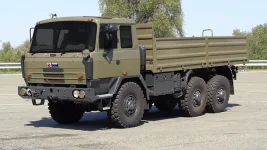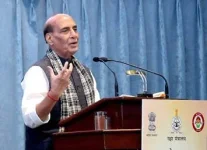- Views: 2K
- Replies: 14
In a significant move to enhance India's coastal surveillance and self-reliance in defence manufacturing, the Ministry of Defence (MoD) has issued a formal Request for Proposal (RFP) to the joint venture between Tata Advanced Systems Limited (TASL) and Airbus Defence and Space.
The proposal is for the acquisition of 15 C-295 transport aircraft specially modified for maritime patrol duties for the Indian Navy and the Indian Coast Guard.
This step follows the initial approval granted by the Defence Acquisition Council (DAC) earlier this year and reinforces the government's "Make in India" policy in the critical defence sector.
The procurement plan specifies nine aircraft in a Medium-Range Maritime Reconnaissance (MRMR) configuration for the Indian Navy, and six in a Multi-Mission Maritime Aircraft (MMMA) layout for the Indian Coast Guard.
These aircraft will be equipped with state-of-the-art systems to conduct anti-submarine warfare, anti-surface warfare, and intelligence, surveillance, and reconnaissance (ISR) missions.
Their armament will include advanced sensors, sonobuoys, lightweight torpedoes, and indigenously developed anti-ship missiles, such as the DRDO's Naval Anti-Ship Missile-Short Range (NASM-SR).
The C-295s are intended to bridge the operational gap between the long-range Boeing P-8I Poseidon and the short-range Dornier DO-228 aircraft, creating a multi-layered aerial surveillance network over India's vast maritime interests.
Underscoring the push for a self-sufficient defence industrial base, the majority of these aircraft will be manufactured and assembled at the Tata Final Assembly Line (FAL) located in Vadodara, Gujarat. This facility, inaugurated in October 2024, is notable for being India's first private-sector military aircraft production line.
The project mandates a high degree of local production, with 12 of the 15 aircraft slated for assembly in India, aiming for up to 78% indigenous content. This initiative is expected to cultivate a comprehensive aerospace ecosystem, involving local manufacturing of components, assembly, testing, and long-term maintenance.
The maritime variants of the C-295 will be integrated with a suite of Indian-developed sensors and systems.
These include a locally sourced Active Electronically Scanned Array (AESA) radar, identification friend-or-foe systems, and electro-optic/infrared (EO/IR) payloads, all developed under the guidance of the DRDO’s Centre for Airborne Systems (CABS) in Bengaluru.
This acquisition builds upon an existing order for 56 C-295 transport aircraft for the Indian Air Force, which are also being assembled at the Vadodara facility after the initial batch was delivered from Spain, signalling a strategic national investment in the platform.
Former Indian Navy spokesperson, Captain D.K. Sharma (Retd.), noted the strategic value of the acquisition, stating that the C-295 will significantly improve maritime domain awareness and allow for more strategic deployment of long-range assets like the P-8I.
The aircraft's versatility will also enable it to perform a wide range of duties, including search and rescue operations, anti-smuggling patrols, and maritime law enforcement across India’s 7,516-kilometre coastline and its vast Exclusive Economic Zone (EEZ).
This procurement strengthens the strategic collaboration between Airbus and Tata, a partnership projected to create substantial economic opportunities, including over 600 direct high-skill jobs and more than 6,000 indirect and medium-skill employment positions.
The project is aligned with the MoD's Strategic Partnership model, which aims to facilitate technology transfer and build indigenous capabilities by pairing Indian companies with global original equipment manufacturers.
Further orders for the C-295 platform are anticipated, with reports suggesting a potential requirement for up to 75 additional aircraft for various Indian security forces in the future.


